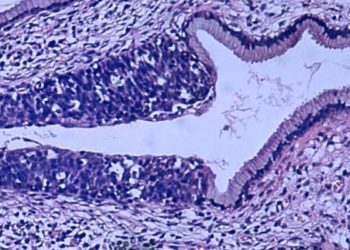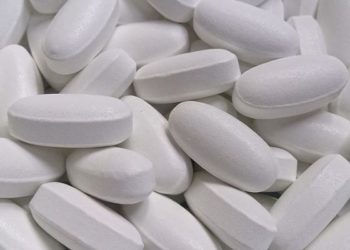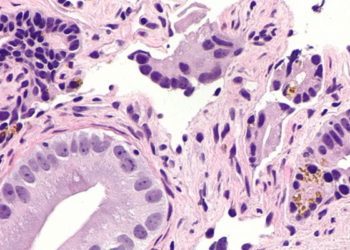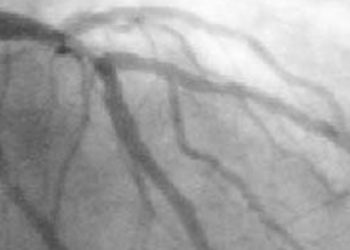2 Minute Medicine Rewind August 5, 2024
1. The use of a digital storytelling intervention developed for Hispanic adult patients with type 2 diabetes (T2D) resulted in a small improvement in glycemic control at 3 months compared to patients who did not receive this intervention.
Evidence Rating Level: 1 (Excellent)
Compared to the general population, Hispanic adults with T2D face worse health outcomes as they are more likely to develop complications and have a higher mortality rate. Storytelling-based interventions involving culture-centric health education to promote behavioural changes have emerged as promising strategies to address these disparities in health outcomes. This randomized clinical trial therefore sought to investigate the acceptability and efficacy of a digital storytelling intervention for adult Hispanic patients with T2D. 227 patients (mean [SD] age = 54.3 [9.3] years) were randomized to the intervention group while 224 patients (mean [SD] age, 54.5 [9.1] years) were randomized to the control group. Participants in the intervention group were shown 12-minute videos involving 4 stories told in Spanish and an educational message reinforcing the goals of diabetes self-management behaviours while participants in the control group received typical clinical care for their diabetes. Glycemic control, defined as the mean change in hemoglobin A1c levels from baseline to 3 months, was improved in the intervention group compared to the control group (mean [SD] hemoglobin A1c level = 9.1% [1.7] to 8.4% [1.6] vs 9.4% [1.8] to 8.8% [2]; P = .04) in the adjusted model but not the unadjusted model. 97.8% (221 of 226) of participants in the intervention group reported that the video was acceptable and 98.6% (223 of 226) stated they were more confident about self-managing their diabetes after watching the video. Overall, this study found that the use of a digital storytelling intervention has high acceptability and modest efficacy in helping Hispanic adult patients with T2D with their glycemic control.
Vitamin K Antagonist Reversal for Urgent Surgery Using 4-Factor Prothrombin Complex Concentrates
1. An investigational 4-factor prothrombin complex concentrate (4F-PCC) demonstrated non-inferior hemostatic efficacy compared to a control 4F-PCC for rapid reversal of vitamin K antagonists (VKA) in patients requiring urgent surgery at high risk of bleeding.
2. The investigational 4F-PCC showed a comparable safety profile to that of the control 4F-PCC with similar rates of adverse events reported in both experimental and control groups.
Evidence Rating Level: 1 (Excellent)
The standard of care for patients on VKAs requiring urgent surgery is rapid reversal via treatment with a 4F-PCC to mitigate risks of bleeding. While only one 4F-PCC, Kcentra (CSL Behring), has been approved by the US Food and Drug Administration, other 4F-PCC compounds such as Octaplex (Octapharma) are available outside the US for rapid VKA reversal for urgent surgery. This randomized clinical trial therefore sought to compare the hemostatic efficacy and safety profile of the two 4F-PCC compounds in patients receiving VKA who require urgent surgery. 208 patients (median age = 67.5 years) taking VKA requiring an urgent surgery that carried a bleeding risk of ≥50 mL were randomized to receive either investigational 4F-PCC (n = 105) or control 4F-PCC (n = 103). The investigational 4F-PCC was found to be non-inferior to the control 4F-PCC with an effective hemostasis achieved in 94.2% vs 94.9% of patients at the end of surgery (proportion difference, −0.008; 95% CI, −0.088 to 0.073; P < .001). The rate of treatment-emergent adverse events (TEAEs) and drug-related TEAEs was comparable between the investigational and control groups (TEAEs = 81.9% vs 77.7%, drug-related TEAEs = 1.0% in both groups). Overall, this study found that the use of an investigational 4F-PCC for patients taking VKAs requiring urgent surgery resulted in a non-inferior hemostatic efficacy and a similar safety profile compared to a control 4F-PCC.
1. Overweight and obese children with inflammatory bowel disease (IBD) were not at an increased risk of loss of response to anti-TNF treatment.
2. Overweight and obese children with IBD experienced a higher risk of disease relapse at the end of follow-up compared to children in the control group.
Evidence Rating Level: 2 (Good)
Recent studies in adults with IBD have suggested that obesity may increase the risk of disease occurrence and negatively impact the response to treatment. However, there is a lack of data on similar outcomes in children with IBD and obesity. This retrospective multicentre study therefore sought to investigate the effect of obesity and being overweight at the start of anti-TNF therapy on treatment response and rates of relapse in children with IBD. 637 children (mean age = 11.5 ± 3.5 years) with Crohn’s disease (CD) or ulcerative colitis (UC) who received anti-TNF treatment from 22 IBD centres affiliated with the IBD Interest and Porto group of the European Society for Pediatric Gastroenterology, Hepatology and Nutrition (ESPGHAN) were included for analysis. The primary outcome was the frequency of loss of response (LOR) to anti-TNF treatment at 1 year and at the end of follow-up. At both time points, there was no difference in the frequency of LOR to anti-TNF treatment between children in the obese group (OG) and the control group (CG) based on the number of patients using the same anti-TNF at 12 months (84% vs 81%, P = 0.898) and at the end of follow-up (69% vs 68%, P = 0.984). However, the number of patients with disease relapse at the end of follow-up was significantly higher in the OG than the CG (64% vs 44%, P < 0.001). Overall, this study found that children with IBD who are overweight or obese did not have a higher LOR to anti-TNF than children who are well-nourished or malnourished, but did experience higher rates of disease relapse.
1. Treatment of ROS1+ non-small cell lung cancer (NSCLC) with taletrectinib, a novel ROS1 tyrosine kinase inhibitor (TKI), resulted in a strong and durable overall response with a favourable safety profile.
Evidence Rating Level: 1 (Excellent)
While management of ROS1+ NSCLC with ROS1 TKIs is the current standard of care, current options such as repotrectinib are effective for brain metastases but have a high incidence of neurologic adverse events (AEs). Taletrectinib is a novel ROS1 TKI which has shown promising preclinical intracranial activity with improved survival compared to repotrectinib in mice models with intracranial tumours. TRUST-1 is a phase II trial investigating the efficacy and safety of taletrectinib monotherapy in Chinese patients with ROS1+ NSCLC. 173 patients (106 TKI naїve; 67 crizotinib-pretreated) ≥18 years old with histologically or cytologically confirmed locally advanced or metastatic ROS1+ NSCLC were enrolled and received taletrectinib. The primary endpoint of the study was the confirmed overall response rate (cORR) verified by an independent review committee. Among the 106 TKI naїve patients, the cORR was 90.6% (95% CI, 83.33 to 95.38). Among the 66 patients pre-treated with crizotinib, the cORR was 51.5% (95% CI, 38.88 to 64.01). The median duration of taletrectinib exposure was 12.2 months with treatment-emergent AEs (TEAEs) leading to dose reduction in 33 (19.1%) of patients and treatment discontinuation in 9 (5.2%) of patients. Overall, this study found that taletrectinib demonstrated high and durable ORR outcomes in patients with ROS1+ NSCLC and had a favourable safety profile. These findings therefore support the use of taletrectinib as a potential option in the management of ROS1+ NSCLC.
1. Patients aged 60 years or older with abdominal pain or bloating had positive predictive values (PPVs) for the development of cancer in the following 12 months above 3%.
2. In patients aged 30 to 59 years, certain blood test abnormalities such as anemia, low albumin, raised platelets, abnormal ferritin or inflammatory markers were strongly predictive of undiagnosed cancer.
Evidence Rating Level: 2 (Good)
Nonspecific abdominal symptoms account for approximately 1 in 10 primary care consultations. While they are most often of benign etiology, they may be features of an undiagnosed cancer in a small subset of patients. However, identifying which patients with nonspecific abdominal symptoms to prioritize for further diagnostic work-up to reduce unecessary investigations remains a challenge. This population-based cohort study therefore sought to investigate the predictive value of abnormal blood test results in detecting cancer in patients presenting with 2 nonspecific abdominal symptoms. 425,549 patients with new abdominal pain and 52,321 patients with new abdominal bloating were included to form a primary study cohort, from which a subgroup comprising patients who had blood tests around the time of symptom presentation was created to estimate the predictive value of abdominal symptoms and blood tests for cancer in the following year. The predictive value of abdominal pain or bloating for any cancer in the following year was 2.2%. Patients of both sexes aged 60 years or older had PPVs for cancer above 3% for either abdominal symptom, which was above the threshold for referral for further investigations based on UK’s National Institute for Health and Care Experience (NICE). The blood test abnormalities with the highest PPV for cancer in the following 12 months were low albumin, high platelets, high PSA and high CA125. In patients aged 30 to 59 years, the presence of anemia, low albumin, raised platelets, abnormal ferritin and raised inflammatory markers often had PPVs for cancer of above 3% depending on the specific age-sex strata. Overall, this study found that patients aged 60 years or older with abdominal pain or bloating should receive considerations for further investigations for cancer, and that further investigations are warranted in patients aged 30 to 59 years with concurrent blood test abnormalities.
Image: PD
©2024 2 Minute Medicine, Inc. All rights reserved. No works may be reproduced without expressed written consent from 2 Minute Medicine, Inc. Inquire about licensing here. No article should be construed as medical advice and is not intended as such by the authors or by 2 Minute Medicine, Inc.







